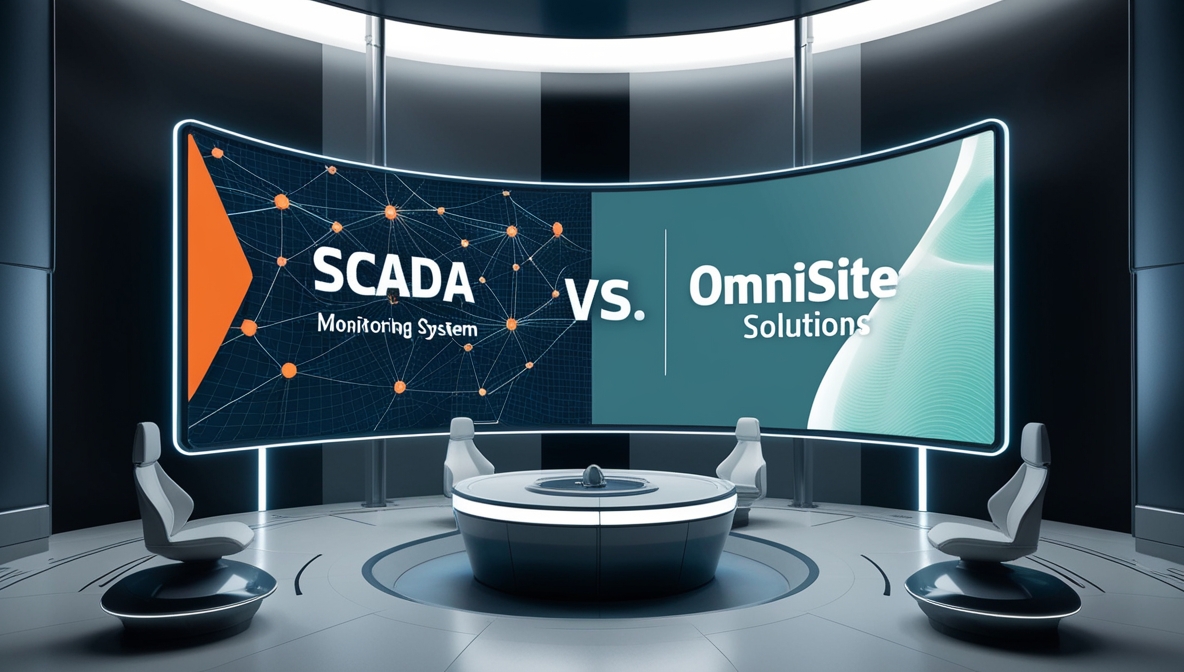In today’s increasingly connected world, the demand for real-time data, operational efficiency, and remote accessibility has reshaped how municipalities, utilities, and private enterprises monitor and manage infrastructure. Two major players dominate this space: traditional SCADA (Supervisory Control and Data Acquisition) systems and modern, cloud-based alternatives like OmniSite monitoring systems. While both offer capabilities that drive decision-making and ensure continuity, they differ significantly in architecture, scalability, and cost-effectiveness.
This comparison will guide you through the strengths, limitations, and real-world value of each system, helping you determine the best fit for your operational needs.
A Legacy of Control: What Is SCADA?
SCADA systems have long been the backbone of industrial and municipal control infrastructure. Originally designed for large-scale, centralized operations, SCADA is known for its reliability and robustness in supervising, collecting, and processing real-time data. Think of massive water treatment plants, electric grids, and manufacturing facilities that require constant uptime and full control over every moving part—SCADA was built for this world.
However, traditional SCADA requires substantial upfront investment in proprietary hardware and software, ongoing maintenance, and dedicated IT teams to manage and secure on-site servers. Its complexity, while suitable for large operations, often becomes a barrier for smaller municipalities or organizations with limited technical capacity.
The Rise of Simplicity: Introducing OmniSite
Enter OmniSite—a cloud-native solution tailored to meet modern monitoring challenges without the baggage of traditional infrastructure. Designed for ease of use, rapid deployment, and remote access, OmniSite monitoring systems deliver real-time alerts and data visualization through intuitive dashboards and mobile interfaces.
In contrast to SCADA’s bulky hardware, OmniSite offers plug-and-play devices that integrate seamlessly with pumps, tanks, and control panels. Data is securely transmitted over cellular networks to the cloud, eliminating the need for physical servers or expensive networking configurations. For organizations looking to upgrade or expand their monitoring capabilities without overhauling their entire system, OmniSite offers a cost-effective, scalable alternative.
Key Differences: SCADA vs. OmniSite
Let’s explore the major differences that set these two systems apart:
1. Infrastructure Requirements
- SCADA systems typically require extensive on-site servers, PLCs (programmable logic controllers), RTUs (remote terminal units), and human-machine interfaces (HMIs).
- OmniSite, by contrast, eliminates the need for local servers. Devices come preconfigured and transmit data directly to the cloud.
2. Scalability and Deployment
- SCADA deployments can take weeks or months to design, configure, and implement—especially in legacy environments.
- OmniSite devices can be installed in hours. Need to add another pump station? Just attach a device, configure it remotely, and you’re live.
3. Accessibility
- Traditional SCADA often restricts access to physical control rooms or VPNs.
- OmniSite is cloud-based, which means you can monitor your systems from a laptop, tablet, or smartphone anywhere, anytime.
4. Data Storage and Analytics
- SCADA systems often rely on local data storage, requiring manual backups and significant IT oversight.
- OmniSite provides automatic, cloud-based backups and customizable analytics dashboards that generate actionable insights with no technical background needed.
5. Cost and Maintenance
- SCADA systems demand significant capital and operational expenditure. Upgrades are expensive, and maintaining cybersecurity compliance is a constant concern.
- OmniSite operates on a subscription model, with updates and security patches deployed automatically, saving both time and budget.
Security Considerations
While cloud-based systems like OmniSite raise questions about data security, they’ve evolved to meet stringent industry standards. Encrypted communication, two-factor authentication, and cloud redundancy provide a secure alternative to SCADA’s localized but often outdated security practices. For many organizations, cloud-native platforms now offer a superior security posture with less overhead.
Real-World Use Cases
Let’s examine a few scenarios where each system shines:
- A Metropolitan Water Plant: With multiple treatment stations, legacy infrastructure, and a full-time IT team, this facility benefits from SCADA’s deep integration and granular control. Engineers fine-tune system parameters on-site and need detailed HMI capabilities.
- A Rural Utility District: With just a handful of pump stations and limited staffing, SCADA’s complexity and cost are prohibitive. Instead, they opt for OmniSite. Installation takes a day, and operators begin receiving text alerts for equipment faults and high-level alarms immediately.
- A Growing Municipality: Initially using OmniSite to monitor remote lift stations, they gradually build a hybrid system. SCADA remains in the central plant, while OmniSite expands coverage to new outlying assets without adding IT burden.
The Hybrid Future
Rather than replacing SCADA, modern solutions like OmniSite are increasingly working alongside it. This hybrid approach enables organizations to modernize selectively—extending monitoring to remote locations or backup systems while retaining SCADA’s control where needed.
This strategy is especially relevant for utilities facing budget limitations. It allows them to deploy advanced monitoring incrementally, while still leveraging their existing infrastructure investments.
Why OmniSite Makes Sense for Modern Monitoring
The shift toward mobile-first, cloud-powered systems reflects a broader trend in operational technology. Organizations want faster installs, easier maintenance, and smarter insights—all without the burden of managing servers and firewalls.
OmniSite fills this gap. It empowers technicians and supervisors alike to make informed decisions in real-time, using tools that require little to no training. Whether it’s stormwater overflow alerts, power failure notifications, or pump cycle tracking, OmniSite delivers the intelligence you need without overcomplicating the process.
Final Thoughts
Choosing between SCADA and OmniSite isn’t about picking a winner—it’s about aligning with your organization’s size, complexity, and future goals. If your infrastructure is extensive and already runs on SCADA, there’s no need to tear it down. But if you’re expanding, working with remote assets, or looking to simplify, cloud-based solutions like OmniSite offer a compelling path forward.
Start with the end in mind: what do you need to see, when do you need to see it, and who needs to act on it? From there, the choice between traditional SCADA and a smart, mobile-friendly solution becomes clear.




